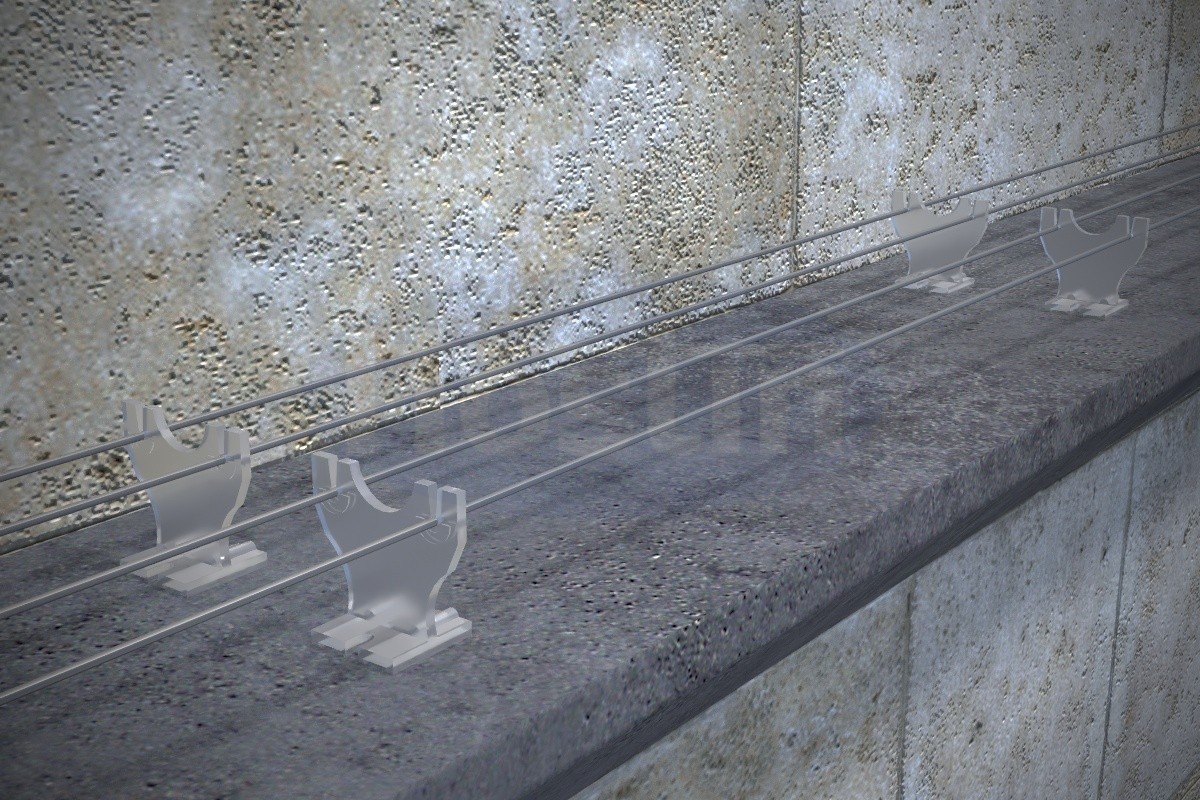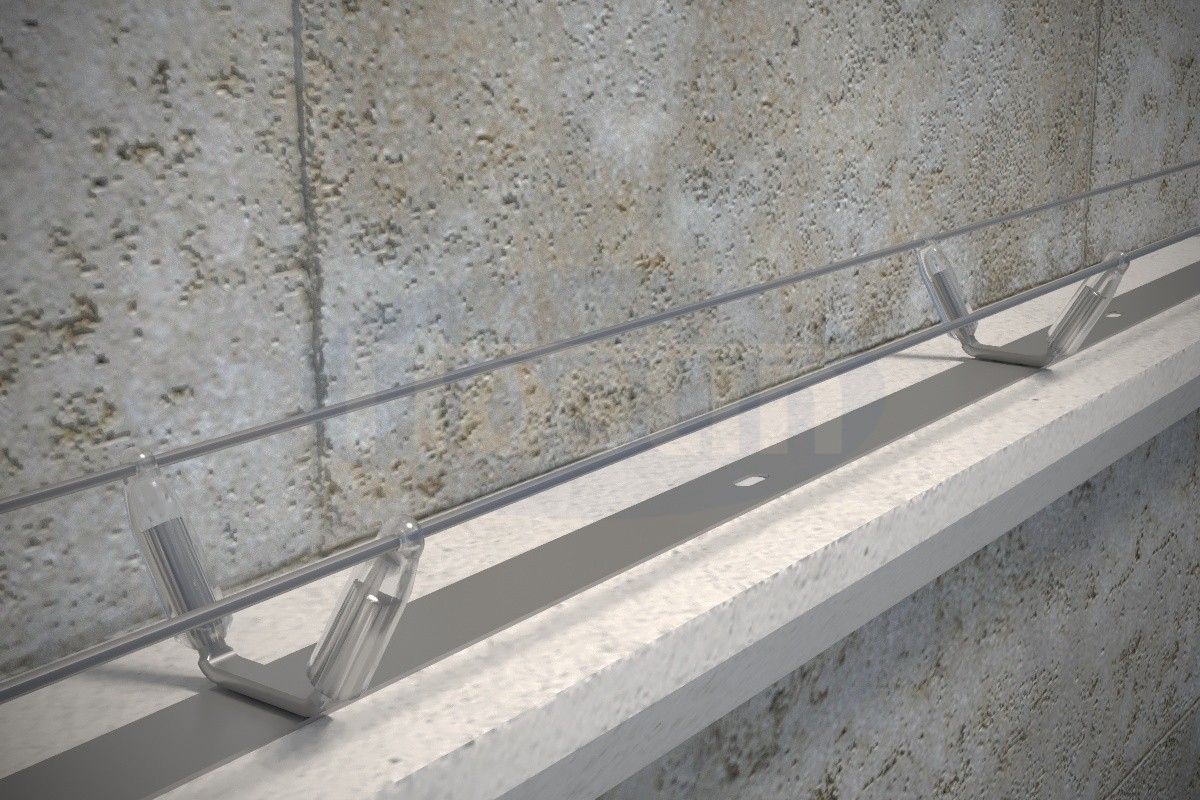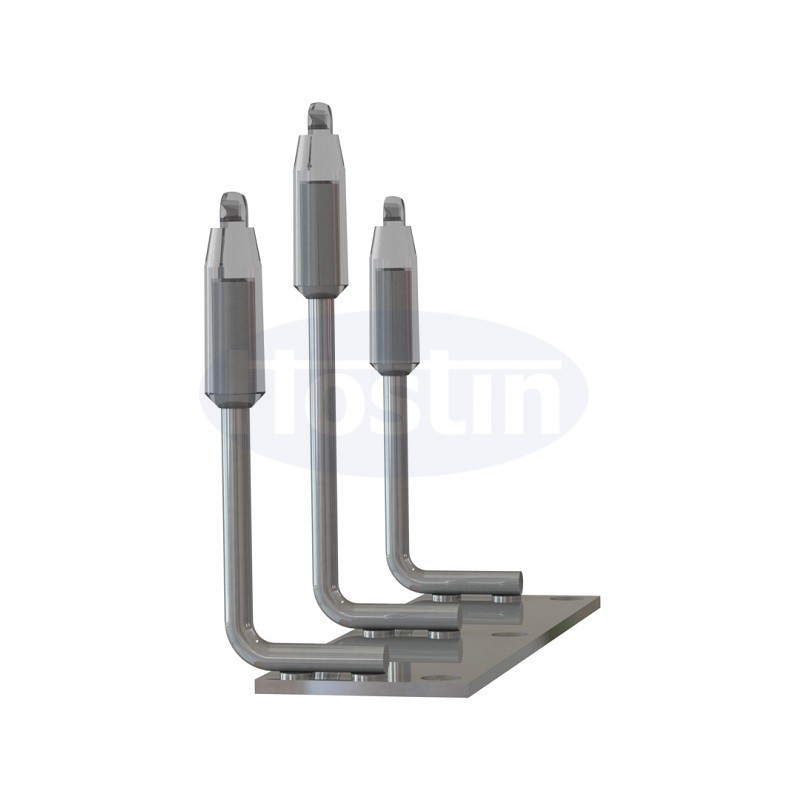Our electric barriers use an electrical pulses of approximately 16 mA at a voltage of approximately 5,000 Volts. Electric pulse with energy max. 0.7 Joule scares pigeons and other birds when they try to land on a protected object and reliably prevents them from returning while not harmfull to them.
1) Electric barrier COMPLETE
 The COMPLETE electric barrier consists of plastic brackets (insulators) that are glued or screwed to the base (on the window sill, ledge, …) at intervals of approximately 35 cm and stainless steel metal rods (with a diameter of 2 mm) whicha are inserted into the prepared brackets. Individual metal rods along the entire length of the barrier are electrically conductively connected by stainless steel springs and connected to a source of high-voltage electrical pulses (max. 16 mA at approx. 5,000 volts).
The COMPLETE electric barrier consists of plastic brackets (insulators) that are glued or screwed to the base (on the window sill, ledge, …) at intervals of approximately 35 cm and stainless steel metal rods (with a diameter of 2 mm) whicha are inserted into the prepared brackets. Individual metal rods along the entire length of the barrier are electrically conductively connected by stainless steel springs and connected to a source of high-voltage electrical pulses (max. 16 mA at approx. 5,000 volts).
2) Electric barrier Fix Duo
 The Fix Duo electric barrier consists of a stainless steel carrier belt with dimensions of 1,000 x 18 x 0.8 mm, on which are welded V-shaped carrier rods with plastic insulators at their ends. Stainless steel rods with a diameter of 2 mm are inserted into the insulators. The rods along the entire length of the barrier are electrically conductively interconnected by stainless steel springs and connected to a source of high-voltage electrical pulses (max. 16 mA at approx. 5,000 volts).
The Fix Duo electric barrier consists of a stainless steel carrier belt with dimensions of 1,000 x 18 x 0.8 mm, on which are welded V-shaped carrier rods with plastic insulators at their ends. Stainless steel rods with a diameter of 2 mm are inserted into the insulators. The rods along the entire length of the barrier are electrically conductively interconnected by stainless steel springs and connected to a source of high-voltage electrical pulses (max. 16 mA at approx. 5,000 volts).
3) Carrier rods on sheet plate
 The electric barrier can also be assembled from metal brackets – carrier rods on a sheet plate that are glued or screwed to the base (on a windowsill, cornice, …) at intervals of approximately 35 cm and stainless steel metal rods (with a diameter of 2 mm) inserted into plastic insulators at the ends of the supporting rods. Individual metal rods (electrodes) along the entire length of the barrier are electrically conductively interconnected by stainless steel springs and connected to a source of high-voltage electrical pulses (max. 16 mA at approx. 5,000 volts).
The electric barrier can also be assembled from metal brackets – carrier rods on a sheet plate that are glued or screwed to the base (on a windowsill, cornice, …) at intervals of approximately 35 cm and stainless steel metal rods (with a diameter of 2 mm) inserted into plastic insulators at the ends of the supporting rods. Individual metal rods (electrodes) along the entire length of the barrier are electrically conductively interconnected by stainless steel springs and connected to a source of high-voltage electrical pulses (max. 16 mA at approx. 5,000 volts).
